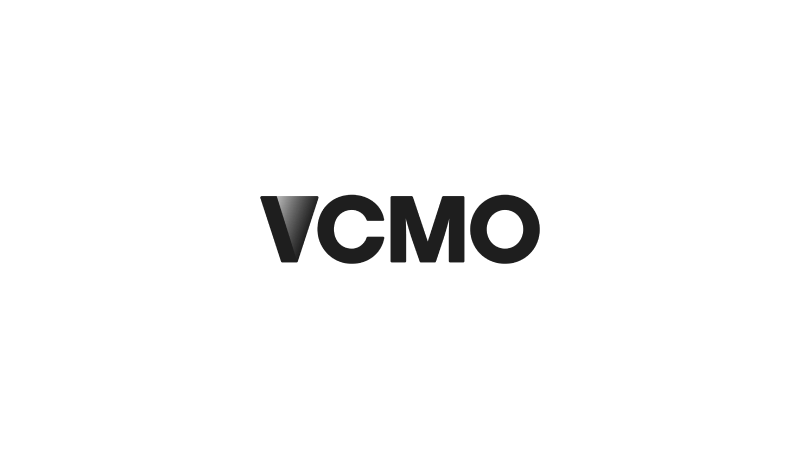Maximise impact: how to embed a Fractional CMO into your leadership team for lasting growth.
Introduction: From Hiring to Embedding
Appointing a Fractional Chief Marketing Officer (CMO) is a strategic decision that signals ambition. It reflects a recognition that marketing leadership is not a cost centre, but a growth driver capable of shaping revenue, reputation, and enterprise value. Yet while the decision to hire a Fractional CMO is important, the way they are integrated into the business is often the determining factor in whether the engagement succeeds or falls short.
Too often, businesses treat fractional leadership as a plug-and-play solution. They assume that the CMO can simply “slot in,” drive performance, and deliver results without structured onboarding or cultural alignment. In reality, the Fractional CMO model only works when the leader is embedded as part of the senior team, given the right visibility, and empowered with access to the tools, people, and information they need. Integration is not administrative—it is strategic.
For CEOs, founders, and investors, the question is not just whether to hire a Fractional CMO, but how to maximise their impact. This requires deliberate planning: clarifying goals, defining expectations, aligning communication rhythms, and ensuring accountability. When executed well, integration transforms the engagement from a short-term solution into a lasting source of competitive advantage.
Read our article: How to Choose a Fractional CMO for Your Business: A Comprehensive Guide.
Onboarding & Strategic Immersion
Successful integration begins with immersion. For a Fractional CMO to deliver meaningful impact, they must rapidly understand not just the marketing function, but the broader business model, strategic priorities, and cultural dynamics. This means onboarding must go beyond a perfunctory handover of documents or access to systems. It requires a structured process that equips the CMO with the context they need to act as a true member of the leadership team.
At the outset, businesses should provide a clear overview of the company’s current situation—its commercial objectives, customer base, product pipeline, and financial position. Just as importantly, the CMO should be introduced to key stakeholders across the organisation, from the board and senior leadership to sales, operations, and finance. These early interactions build credibility, accelerate trust, and establish the relationships required for cross-functional alignment.
“A Fractional CMO cannot operate in the shadows. Without structured onboarding and full access to the commercial context, you are paying for potential rather than performance.”
Rachael Wheatley - Chartered Fractional CMO, VCMO
A diagnostic phase is equally critical. Fractional CMOs often begin with a gap analysis: identifying where marketing capabilities, systems, and processes are underperforming, and where opportunities for growth exist in the market. This analysis sets the foundation for prioritisation and ensures that objectives are grounded in evidence, not assumptions.
Finally, immersion should be a two-way process. While the business familiarises the CMO with its culture and constraints, the CMO should also help the organisation understand the fractional model—its rhythms, boundaries, and expectations. Establishing this mutual understanding early prevents misalignment later and sets the tone for a collaborative, high-impact relationship.
Goal Setting, Expectations & Role Clarity
Once the Fractional CMO has absorbed the context of the business, the next priority is alignment on goals. Too many engagements falter because expectations remain implicit rather than explicit. Boards may expect immediate demand generation or rapid brand visibility, while the CMO is focused on building long-term infrastructure and capability. Without clarity, frustration builds on both sides.
Effective goal setting should therefore be a collaborative exercise. The CEO, board, and CMO must agree not only on what success looks like, but also on the timeframe and sequence in which it will be delivered. This typically involves balancing short-term wins with longer-term transformation. For example, a quick uplift in qualified leads may be prioritised in the first 90 days, while a more comprehensive repositioning of the brand may be planned over 12–18 months.
Role clarity is just as important. The organisation must be clear about what the Fractional CMO owns, what remains within the remit of the internal team, and how agencies or third parties fit into the picture. Ambiguity here can lead to duplication of effort, internal tension, and wasted budget. Explicit agreements around scope, reporting lines, and decision-making authority eliminate these risks.
Budget alignment is another cornerstone of clarity. Without an agreed investment envelope, even the best strategy will fail in execution. By linking budget to objectives upfront, both sides can assess feasibility and make trade-offs early. When goals, roles, and resources are aligned, the Fractional CMO can operate with confidence—and the business can evaluate results against a transparent, agreed framework.
Building Trust and Influence Across Leadership
The true effectiveness of a Fractional CMO is not measured solely by the strategies they design, but by their ability to influence decisions across the leadership table. Unlike consultants who advise from the sidelines, a Fractional CMO is expected to be an embedded leader. This requires not just technical expertise, but the ability to earn trust quickly and exert influence at both board and operational levels.
Trust is built through transparency and consistency. From the outset, the CMO should establish clear rhythms of communication—weekly check-ins with the CEO/CFO, monthly reporting to the board, and regular updates to the wider leadership team. These touchpoints create visibility, prevent surprises, and ensure that marketing is seen as fully aligned with business priorities. Just as importantly, the CMO should demonstrate a willingness to listen, adapting strategies in response to feedback and shifting market realities.
“Fractional leadership only works when marketing is given equal weight at the leadership table. Influence is not earned through campaign results alone, but through the ability to connect marketing decisions to revenue, margin, and enterprise value.”
Influence extends beyond the boardroom. The Fractional CMO must also build credibility with sales, product, and finance functions. This requires fluency in commercial language—connecting marketing activity directly to pipeline contribution, revenue forecasts, and customer lifetime value. When colleagues see that marketing leadership is commercially grounded rather than siloed, collaboration strengthens and resistance diminishes.
Ultimately, integration depends on the CMO’s ability to act as both strategist and unifier. By embedding themselves into decision-making rhythms and demonstrating commercial impact, they move from being an external resource to a trusted voice shaping the company’s trajectory.
Resources, Data & Support for Impact
Even the most capable Fractional CMO cannot deliver results in a vacuum. Integration depends on equipping them with the resources, access, and support required to execute effectively. Too often, businesses underestimate this step, expecting transformation without providing the tools or authority to drive it.
First and foremost, access to data is non-negotiable. A Fractional CMO must be able to interrogate customer insights, financial performance, sales pipeline metrics, and digital analytics from day one. Without visibility of how customers are acquired, converted, and retained, marketing strategies risk being built on assumptions rather than evidence. Providing clean, timely data signals trust and accelerates informed decision-making.
Support from the wider team is equally critical. A Fractional CMO is not a substitute for executional capacity; rather, they orchestrate and direct it. Internal marketing staff, agencies, and contractors must be aligned around the Fractional CMO’s strategic direction. Businesses should ensure that reporting lines, workflows, and responsibilities are adjusted to reflect the new leadership dynamic, avoiding duplication or confusion.
Finally, companies should recognise the unique value of a Fractional CMO’s external network. Experienced leaders often bring trusted partners—specialist agencies, technology vendors, or subject matter experts—who can be mobilised quickly. Leveraging this ecosystem accelerates delivery and reduces the risk of costly trial and error.
Providing data, tools, and support is not a courtesy; it is a prerequisite for impact. When these elements are in place, a Fractional CMO can operate at pace, moving from diagnosis to delivery without delay.
Accountability and Value Creation
The decision to appoint a Fractional CMO is ultimately a commercial one, and as with any senior leadership hire, accountability is essential. For CEOs and boards, the central question is not whether the CMO is busy, but whether they are creating measurable business value. Clear performance frameworks ensure that expectations are transparent, progress is visible, and outcomes are defensible.
Accountability begins with defining key performance indicators that connect directly to commercial goals. Pipeline contribution, revenue growth, customer acquisition cost (CAC), and customer lifetime value (CLV) are stronger measures than vanity metrics such as impressions or follower counts. A capable Fractional CMO will insist on linking activity to outcomes, translating marketing performance into the language of financial and operational impact.
Regular performance reviews cement this accountability. These may take the form of monthly board updates, quarterly reviews, or mid-engagement health checks. Beyond tracking progress, these sessions allow the business and CMO to re-evaluate priorities, allocate resources more effectively, and course-correct where necessary. In this way, accountability is not punitive but iterative—enabling agility in pursuit of growth.
Equally important is budget stewardship. Fractional CMOs are often charged with managing constrained resources, which makes discipline paramount. They must demonstrate the same financial rigour as any senior executive, ensuring marketing investments are proportionate to the return. When boards see that leadership is both commercially accountable and strategically ambitious, confidence in the model grows—and value creation follows naturally.
“The best Fractional CMOs behave like investors. They obsess over ROI, challenge assumptions, and focus relentlessly on creating measurable value—because their credibility depends on it.”
Lydia McClelland - Chartered Fractional CMO, VCMO
Risk and Continuity Planning
No leadership model is without risk, and the fractional approach is no exception. The very flexibility that makes a Fractional CMO attractive—part-time engagement, non-permanent commitment, and portfolio career orientation—also introduces vulnerabilities that must be managed from the outset. CEOs and investors should approach integration with a clear-eyed view of these risks and a proactive plan for continuity.
One of the most common concerns is bandwidth. A CMO managing several concurrent clients may be stretched too thin to dedicate the attention required. During the selection process, it is vital to probe how many active engagements they manage, how they allocate time, and what safeguards are in place during peak demand. A high-quality Fractional CMO will be transparent about workload and honest about availability.
Continuity is another key factor. Unlike a full-time executive, a Fractional CMO may conclude their engagement after six to twelve months. Businesses must therefore ensure that knowledge does not walk out the door with them. This can be mitigated through structured documentation, mentoring of in-house staff, and transition planning well before the engagement ends.
Contractual protections also play a role. Well-structured agreements should define notice periods, exit procedures, and responsibilities for handover. In parallel, businesses should maintain an internal “single source of truth” for marketing processes and data, ensuring that continuity is preserved even in the event of a leadership change.
By acknowledging risks openly and building continuity safeguards into the relationship, companies transform potential vulnerabilities into manageable variables. This not only protects the business but also strengthens trust between the leadership team and the Fractional CMO.
Conclusion: Embedding Leadership for Lasting Value
The integration of a Fractional CMO is not an administrative exercise. It is a strategic process that determines whether marketing leadership becomes a catalyst for growth or remains a peripheral function. The difference lies in how deliberately the business embeds the CMO into its leadership fabric—providing context, aligning goals, ensuring accountability, and planning for continuity.
When executed well, integration creates more than short-term marketing uplift. It embeds strategic capability that outlasts the engagement. Teams become more aligned, processes more robust, and data more central to decision-making. The Fractional CMO’s influence continues to shape outcomes long after their tenure, not because they remain involved, but because the systems, skills, and culture they helped build endure.
For CEOs, founders, and investors, the key consideration is not simply whether to hire a Fractional CMO, but how to integrate them effectively. The businesses that succeed are those that move beyond the notion of outsourcing marketing and embrace the model as a way of embedding high-level leadership into their DNA. Done right, the integration of a Fractional CMO is not a temporary fix—it is the foundation of lasting competitive advantage.
About VCMO
VCMO is a UK-based provider of fractional marketing services, supporting B2B SMEs—ranging from funded scale-ups to mid-tier and private equity-backed businesses—through key moments of growth and transformation. Its Chartered Fractional CMOs and SOSTAC® certified planners embed strategic marketing leadership into organisations navigating product launches, new market entry, acquisitions, and leadership gaps.
What’s a Rich Text element?
The rich text element allows you to create and format headings, paragraphs, blockquotes, images, and video all in one place instead of having to add and format them individually. Just double-click and easily create content.
- By following these tips, you can make sure you’re noticed on LinkedIn and start building the professional connections you need to further your career.
-

Static and dynamic content editing
A rich text element can be used with static or dynamic content. For static content, just drop it into any page and begin editing. For dynamic content, add a rich text field to any collection and then connect a rich text element to that field in the settings panel. Voila!
How to customize formatting for each rich text
Headings, paragraphs, blockquotes, figures, images, and figure captions can all be styled after a class is added to the rich text element using the "When inside of" nested selector system.


Ready to take your marketing to the next level? Let us help you get there.
Subscribe to Our Newsletter
Fractional Edge is our montly newsletter sharing expert opinion on the latest trends in fractional leadership, curated marketing content from leading sources, VCMO events, and much more. Subscribing is quick — just add your name and email.











.jpg)





